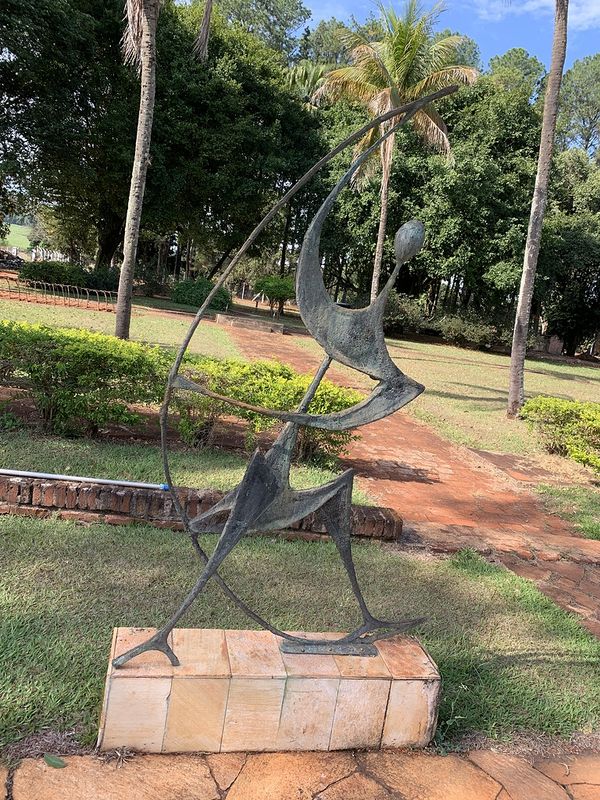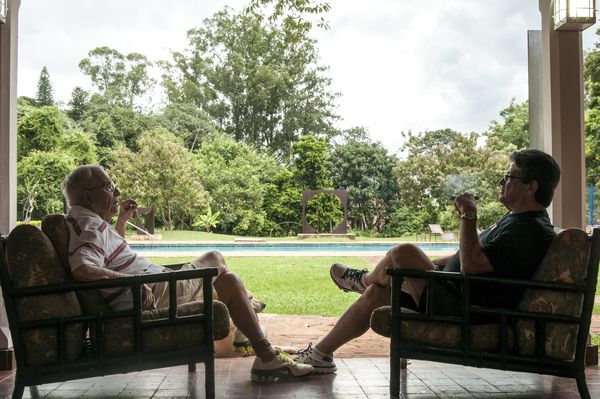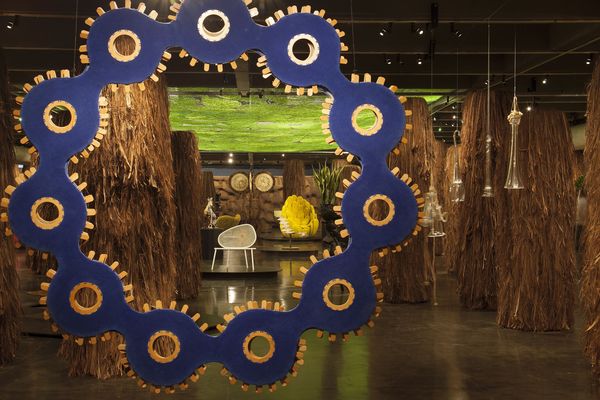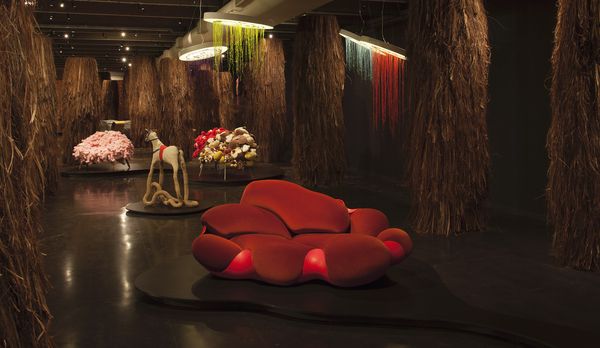Gilberto (left) and Carlos Alberto (right) Chateaubriand at their São Paulo farm property.
Photo by Vicente de Mello.
Founded in 1948, the Museu de Arte Moderna, Rio de Janeiro, is one of the most prestigious museums in Brazil and occupies a key position in the South American art world. MAM Rio was designed by architect Affonso Ready and is considered a landmark of modernism in Brazil. Over the years the MAM has been a point of reference for different art movements, such as Grupo Frente, Neoconcretism and New Brazilian Objectivity in 1967.
Since 1993, the Museu de Arte Moderna has included over 6000 items on loan from the Gilberto Chateaubriand collection, recognized around the world as one the most complete of Modern and Contemporary Brazilian Art. Gilberto, a diplomat and businessman by trade, started to collect in the 1950s, buying a Bahia beach landscape by Jose Pancetti, and soon became a patron of arts, recognizing young artists and including them in his prestigious collection. His son, Carlos Alberto Chateaubriand, has continued his father's legacy as a steward of his ever-growing family collection and is currently MAM’s Chairman of the Board of Directors. We spoke with Carlos Alberto to find what the next priorities are for the MAM as well as his collection.
Exterior view, Museu de Arte Moderna do Rio de Janeiro.
PHILLIPS: The MAM's history is very connected to American businessman and politician Nelson Rockefeller, how is that?
CARLOS ALBERTO CHATEURBRIAND: He was one of the main supporters for the creation of the Museu de Arte Moderna do Rio de Janeiro (MAM) and at its opening Nelson Rockefeller donated four works from his collection: Fernand Léger, Yves Tanguy, Robert Motherwell and the Jackson Pollock that we sold at Phillips, in 2018. Nelson Rockefeller was fundamental for the museum’s first 70 years, and now, remains fundamental in its sustainability for the next 70 years – he is one of our great benefactors.
P: How are you and the MAM adapting to this moment?
CAC: Rockefeller’s family, who we consulted about the sale of the Pollock, were supportive of our decision to sell and today the proceeds of that sale have allowed us to get through this very difficult time, which is affecting all cultural institutions.
We hired a new executive director and, for the time being, we are managing to navigate by creating educational actions, debates and round-table discussions about our exhibitions, this moment in art and its future. Soon we are launching virtual visits to the exhibitions and our collection of 16,300 works of art. The museum also houses a film archive, one of the most important in Latin America, with more than 8,400 titles.
Installation view of Irmãos Campana – 35 Revoluções, currently on temporary hold while the museum is closed. Photo by Fernando Laszlo.
P: The museum had to put a major show of the Campana Brothers on hold. What is the main attraction of this exhibition?
CAC: It’s the fact that their retrospective, spanning 35 years of work, became an exhibition inextricably linked with the Museu de Arte Moderna do Rio de Janeiro - they used the entire space of the museum. They didn’t want to do it anywhere else, and they built this exhibition specifically for the museum.
Installation view of Irmãos Campana – 35 Revoluções, currently on temporary hold while the museum is closed. Photo by Fernando Laszlo.
How do you classify the Campana Brothers' work? Do you collect them?
CAC: They are totally vanguard and their work is playful, yet thoughtful. We have collected a Campana chair, though our own pieces are not in the exhibition. In fact, everything in the museum came directly from the artists.

A work of sculpture by Bruno Giorgi on view at their São Paulo farm property.
P: What are your plans for your father’s collection?
The Gilberto Chateaubriand Collection is largely found in the Museum, where we have 6,600 works. Other parts of the collection are destined for our farm in the state of São Paulo, where we are currently constructing the Cultural Institute Gilberto Chateaubriand. We are currently finishing the restoration of a 1920s shed, previously used for stocking grains in the farm, to be the headquarters of the Institute.

A work of sculpture by Franz Weissman on view at their São Paulo farm property.
That space will house part of our contemporary art collection. During the week, we will receive visits from local schools in the interior of São Paulo, and during the weekends it will be opened to the general public. We are planning guided tours, workshops, lectures and two artist-residencies per year. We were planning to open this new space in June, though now with this pandemic, we hope to do it in October.
Learn more about the Museu de Arte Moderna do Rio de Janeiro >



